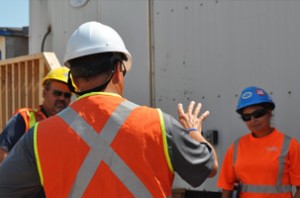 It takes personal confidence to become a successful supervisor. Building that level of personal confidence requires learning supervisory skills. A supervisor’s job is to establish goals and lead a team of people to achieve them. Leadership requires stepping out in front with new, creative ideas that save money, increase productivity and establish credibility and respect from employees.
It takes personal confidence to become a successful supervisor. Building that level of personal confidence requires learning supervisory skills. A supervisor’s job is to establish goals and lead a team of people to achieve them. Leadership requires stepping out in front with new, creative ideas that save money, increase productivity and establish credibility and respect from employees.
Month: October 2014
Cost to Treat Hepatitis C -$1000 a Pill
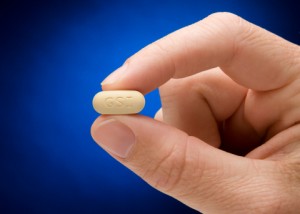 Sofosbuvir (brand name Sovaldi) is a drug developed by Gilead Sciences used to treat hepatitis C infection. In combination with other therapies, Sofosbuvir can effectively cure hepatitis in 90 percent of patients. It inhibits the RNA polymerase that the hepatitis C virus (HCV) uses to replicate its RNA. It was discovered at Pharmasset and developed by Gilead Sciences.
Sofosbuvir (brand name Sovaldi) is a drug developed by Gilead Sciences used to treat hepatitis C infection. In combination with other therapies, Sofosbuvir can effectively cure hepatitis in 90 percent of patients. It inhibits the RNA polymerase that the hepatitis C virus (HCV) uses to replicate its RNA. It was discovered at Pharmasset and developed by Gilead Sciences.
The cost of Sofosbuvir is $1000 per pill taken daily for 12 to 24 weeks. That is $84,000 to $168,000 for a course of treatment.
Foot Comfort and Safety at Work
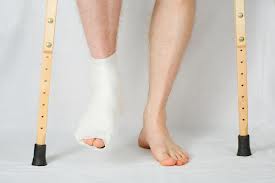 Why is foot comfort important?
Why is foot comfort important?
As the old saying goes, “When your feet hurt, you hurt all over.”
There are two major categories of work-related foot injuries. The first category includes foot injuries from punctures, crushing, sprains, and lacerations. They account for 10 percent of all reported disabling injuries. The second group of injuries includes those resulting from slips, trips and falls. They account for 15 percent of all reported disabling injuries. Slips and falls do not always result in a foot injury but lack of attention to foot safety plays an important role in their occurrence.
These two categories of foot injuries, however, do not exhaust the whole range of foot problems at work. There are also other conditions such as calluses, ingrown toenails or simply tired feet that are common among workers. Although these may not be considered as occupational injuries in the strictest sense, they can have serious consequences for health and safety at the workplace. They cause discomfort, pain and fatigue. Fatigue sets up the worker for further injuries affecting the muscles and joints. Also, a worker who is tired and suffering pain is less alert and more likely to act unsafely. An accident of any kind may result.
The Cost of Inactivity
 Exercise and physical activity benefit the body, while a sedentary lifestyle does the opposite – increasing the chances of becoming overweight and developing a number of chronic diseases.
Exercise and physical activity benefit the body, while a sedentary lifestyle does the opposite – increasing the chances of becoming overweight and developing a number of chronic diseases.
- Only about 30 percent of adult Americans report they get regular physical activity during their leisure time—and about 40 percent of Americans say they get no leisure-time physical activity at all.
- The Nurses’ Health Study found a strong link between television watching and obesity. Researchers followed more than 50,000 middle-aged women for six years, surveying their diet and activity habits. Findings showed that for every two hours the women spent watching television each day, they had a 23 percent higher risk of becoming obese and 14 percent higher risk of developing diabetes. It didn’t matter if the women were avid exercisers: The more television they watched, the more likely they were to gain weight or develop diabetes, regardless of how much leisure-time activity and walking they did. Long hours of sitting at work also increased the risk of obesity and diabetes.
- Researchers at Tokyo Medical University found an association between spending less time watching television and a lower risk of overweight and obesity in older adults, regardless of whether participants met physical activity guidelines. The study followed 1,806 participants between the ages of 65 and 74. Participants were put into one of four categories based on television viewing time. The less time spent watching television, the lower the participants’ risk of becoming overweight or obese.
- Another study analyzed the global effect of inactivity on the increase of diseases. The researchers estimated that physical inactivity accounts for 6% of the burden of heart disease, 7% of type 2 diabetes, 10% of breast cancer, and 10% of colon cancer. Inactivity also causes 9% of premature mortality. These staggering statistics put the true dangers associated with inactivity into a global perspective.
via Staying Active | The Nutrition Source | Harvard School of Public Health.
Prevention through Design
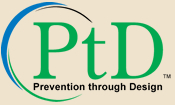 One of the best ways to prevent and control occupational injuries, illnesses, and fatalities is to “design out” or minimize hazards and risks. NIOSH leads a national initiative called Prevention through Design (PtD). PtD’s purpose is to promote this concept and highlight its importance in all business decisions.
One of the best ways to prevent and control occupational injuries, illnesses, and fatalities is to “design out” or minimize hazards and risks. NIOSH leads a national initiative called Prevention through Design (PtD). PtD’s purpose is to promote this concept and highlight its importance in all business decisions.
via CDC – Prevention through Design – NIOSH Workplace Safety and Health Topic.
Strike a Better Work-life Balance
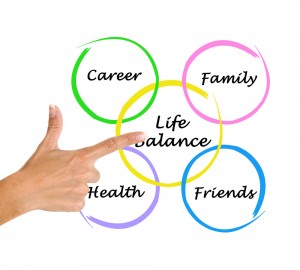 As long as you’re working, juggling the demands of career and personal life will probably be an ongoing challenge. Consider these ideas to find the work-life balance that’s best for you:
As long as you’re working, juggling the demands of career and personal life will probably be an ongoing challenge. Consider these ideas to find the work-life balance that’s best for you:
- Track your time. Pay attention to your daily tasks, including work-related and personal activities. Decide what’s necessary and what satisfies you the most. Cut or delegate activities you don’t enjoy or can’t handle — or share your concerns and possible solutions with your employer or others.
- Take advantage of your options. Ask your employer about flex hours, a compressed workweek, job sharing, telecommuting or other scheduling flexibility. The more control you have over your hours, the less stressed you’re likely to be.
- Learn to say no. Whether it’s a co-worker asking you to spearhead an extra project or your child’s teacher asking you to organize a class party, remember that it’s OK to respectfully say no. When you quit accepting tasks out of guilt or a false sense of obligation, you’ll have more time for the activities that are meaningful to you.
- Leave work at work. With the technology to connect to anyone at any time from virtually anywhere, there might be no boundary between work and home — unless you create it. Make a conscious decision to separate work time from personal time. When you’re with your family, for instance, keep your laptop in your briefcase.
- Manage your time. Organize household tasks efficiently, such as running errands in batches or doing a load of laundry every day, rather than saving it all for your day off. Put family events on a weekly family calendar and keep a daily to-do list. Do what needs to be done and let the rest go.
- Bolster your support system. At work, join forces with co-workers who can cover for you — and vice versa — when family conflicts arise. At home, enlist trusted friends and loved ones to pitch in with child care or household responsibilities when you need to work overtime or travel.
- Nurture yourself. Eat a healthy diet, include physical activity in your daily routine and get enough sleep. Set aside time each day for an activity that you enjoy, such as practicing yoga or reading. Better yet, discover activities you can do with your partner, family or friends — such as hiking, dancing or taking cooking classes.
via Work-life balance: Tips to reclaim control – Mayo Clinic.
Furnace Safety | Preventing Carbon Monoxide Poisoning
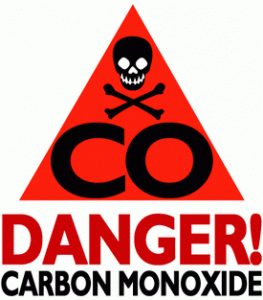 Carbon Monoxide is odorless, colorless, tasteless and can be deadly. The best way to protect your family is with a Carbon Monoxide detector. Carbon Monoxide detectors or alarms can be purchased at hardware stores and many grocery stores. Be sure to test alarms regularly and replace batteries often.
Carbon Monoxide is odorless, colorless, tasteless and can be deadly. The best way to protect your family is with a Carbon Monoxide detector. Carbon Monoxide detectors or alarms can be purchased at hardware stores and many grocery stores. Be sure to test alarms regularly and replace batteries often.
Prevent Carbon Monoxide
- Do have your heating system, water heater and any other gas, oil, or coal burning appliances serviced by a qualified technician every year.
- Do install a battery operated or battery back-up CO detector in your home and check or replace the battery when you change the time on your clocks each spring and fall. If the detector sounds, leave your home immediately and call 911.
- Do seek prompt medical attention if you suspect CO poisoning and are feeling dizzy, light-headed, or nauseous.
- Don’t use a generator, charcoal grill, camp stove, or other gasoline or charcoal-burning device inside your home, basement, garage or near a window.
- Don’t run a car or truck inside a garage attached to your house, even if you leave the door open.
- Don’t burn anything in a stove or fireplace that isn’t vented.
- Don’t heat your house with a gas oven.
If you suspect CO poisoning and you or anyone in your family are experiencing dizziness, nausea, lightheadedness, vomiting, headache and confusion, you should immediately:
- Get everyone (pets, too!) out of the house and into the fresh air.
- Call 911 for immediate medical help.
- Do not re-enter the house under any circumstance until help has arrived, your house has been investigated and the problem corrected.
- Call a qualified contractor or your gas utility to have your appliances checked.
Fire Safety
 Preventing fires is an important part of fire safety. In the United States, cooking is the main cause of home fires. Cigarettes are a big risk too – they are the leading cause of fire deaths. Here are some fire prevention tips:
Preventing fires is an important part of fire safety. In the United States, cooking is the main cause of home fires. Cigarettes are a big risk too – they are the leading cause of fire deaths. Here are some fire prevention tips:
- Don’t leave the stove or oven unattended when they are on
- Don’t let children use kitchen appliances unsupervised
- Don’t smoke in bed
- Make sure your electrical appliances and cords are in good condition
It is also important to be prepared in case there is a fire. Make sure that you have working smoke detectors on every floor and in every bedroom. You should also have fire extinguishers on every floor and in your kitchen. Make and practice an escape plan in case the main exit is blocked.
Eye Safety
 Each day about 2000 U.S. workers have a job-related eye injury that requires medical treatment. About one third of the injuries are treated in hospital emergency departments and more than 100 of these injuries result in one or more days of lost work. The majority of these injuries result from small particles or objects striking or abrading the eye. Examples include metal slivers, wood chips, dust, and cement chips that are ejected by tools, wind blown, or fall from above a worker. Some of these objects, such as nails, staples, or slivers of wood or metal penetrate the eyeball and result in a permanent loss of vision. Large objects may also strike the eye/face, or a worker may run into an object causing blunt force trauma to the eyeball or eye socket. Chemical burns to one or both eyes from splashes of industrial chemicals or cleaning products are common. Thermal burns to the eye occur as well. Among welders, their assistants, and nearby workers, UV radiation burns (welder’s flash) routinely damage workers’ eyes and surrounding tissue.
Each day about 2000 U.S. workers have a job-related eye injury that requires medical treatment. About one third of the injuries are treated in hospital emergency departments and more than 100 of these injuries result in one or more days of lost work. The majority of these injuries result from small particles or objects striking or abrading the eye. Examples include metal slivers, wood chips, dust, and cement chips that are ejected by tools, wind blown, or fall from above a worker. Some of these objects, such as nails, staples, or slivers of wood or metal penetrate the eyeball and result in a permanent loss of vision. Large objects may also strike the eye/face, or a worker may run into an object causing blunt force trauma to the eyeball or eye socket. Chemical burns to one or both eyes from splashes of industrial chemicals or cleaning products are common. Thermal burns to the eye occur as well. Among welders, their assistants, and nearby workers, UV radiation burns (welder’s flash) routinely damage workers’ eyes and surrounding tissue.
via CDC – Eye Safety – NIOSH Workplace Safety and Health Topic.
Keeping Children Safe on the Playground
 Whether it’s a swing set in the backyard or the more elaborate apparatus in the park, there are many positive things to say about playground equipment. The use of this equipment encourages children to test and expand their physical abilities. However, there are some inevitable dangers. The risks can be minimized when equipment is well designed and children are taught basic playground manners. Click on the link below for some guidelines you can use in selecting playground equipment and sites for your child.
Whether it’s a swing set in the backyard or the more elaborate apparatus in the park, there are many positive things to say about playground equipment. The use of this equipment encourages children to test and expand their physical abilities. However, there are some inevitable dangers. The risks can be minimized when equipment is well designed and children are taught basic playground manners. Click on the link below for some guidelines you can use in selecting playground equipment and sites for your child.
via Keeping Children Safe on the Playground – HealthyChildren.org.
